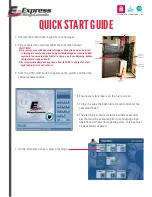
Glossary
WILINK I MODULAR BASE STATION SYSTEM MANUAL
205
RF
Radio frequency. An AC signal of high enough frequency to be used for
wireless communications.
RFC
Request For Comments. The name of the result and the process for creating
a standard on the Internet. New standards are proposed and published on
the Internet, as a Request For Comments. The proposal is reviewed by the
Internet Engineering Task Force.
RSSI
Received Signal Strength Indicator. A signal or circuit that indicates the
strength of the incoming (received) signal in a receiver.
R&TTE
Radio & Telecommunications Terminal Equipment. The R&TTE Directive
1999/5/EC governs the marketing and use of R&TTE equipment. With the
exception of a few categories of equipment, the Directive covers all
equipment, which uses the radio frequency spectrum. It also covers all
terminal equipment attached to public telecommunication networks.
RT
Real Time. Real Time service is designed to meet the needs of Real Time
Variable Bit Rate (RT-VBR) like services characterized by requirements for
guaranteed rate and delay such as streaming video or audio. These services
are dynamic in nature, but offer periodic dedicated requests opportunities
to meet real-time requirements. Because the subscriber equipment issues
explicit requests, the protocol overhead and latency is increased, but
capacity is granted only according to the real needs of the connection.
Service parameters include CIR and CT.
RTCP
RTP Control Protocol. A protocol that monitors the QoS of an RTP
connection and conveys information about the on-going session.
RTP
Real Time Protocol. An Internet protocol for transmitting real-time data
such as audio and video. RTP itself does not guarantee real-time delivery of
data, but it does provide mechanisms for the sending and receiving
applications to support streaming data. Typically, RTP runs on top of the
UDP protocol, although the specification is general enough to support other
transport protocols.
Rx
Receive
SIP
Session Initiation Protocol. An application-layer control IETF protocol that
can establish, modify, and terminate multimedia sessions such as Internet
telephony calls (VoIP). SIP can also invite participants to already existing
sessions, such as multicast conferences. Media can be added to (and
removed from) an existing session. SIP transparently supports name
mapping and redirection services, which supports personal mobility - users
can maintain a single externally visible identifier regardless of their network
location.













































